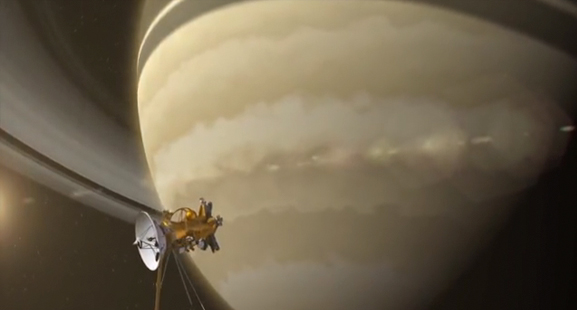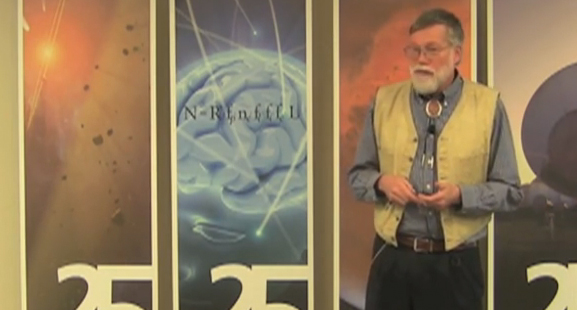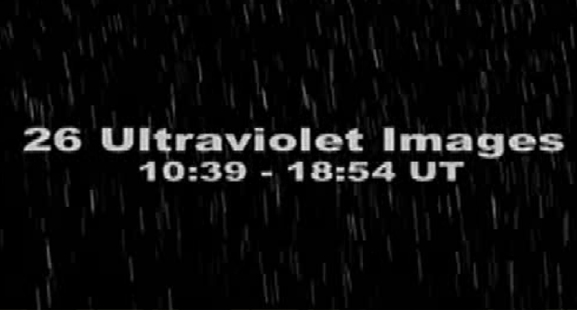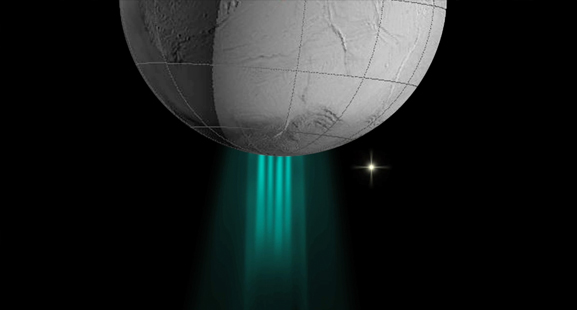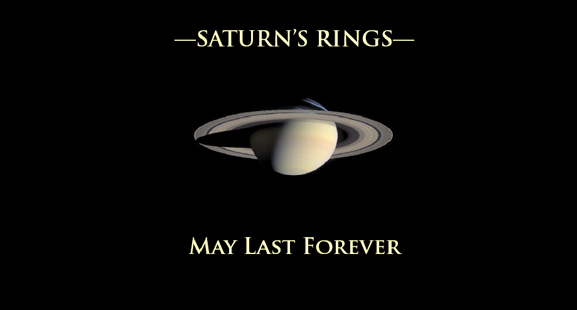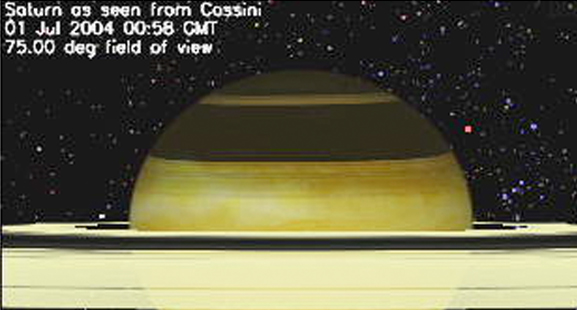Cassini UVIS Movies and Podcasts
Most recent is first
Cassini: Coming Attractions at Saturn. What incredible things will the Cassini spacecraft at Saturn see and do over the next few years? Here’s a preview. (Courtesy NASA Jet Propulsion Laboratory)
Saturn’s Rings after Equinox – SETI Talk: YouTube video (1 hour 4 min). Larry Esposito gave a weekly colloquium talk at the SETI Institute in Mountain View, CA on March 14, 2012. Saturn’s Equinox 2009: Oblique lighting exposed vertical structure and embedded objects. The rings were the coldest ever. Dr. Esposito will show how images inspired new occultation and spectral analysis that show abundant structure in the perturbed regions. The rings are more variable and complex than we had expected prior to this seasonal viewing geometry.
Saturn’s Spinning Northern Lights: Video. UVIS obtained 26 images of Saturn’s auroras on May 25, 2007 over an 8 hour 15 minute period, most of a planetary rotation period. They are presented here as side-by-side animations of simultaneous observations from two UVIS channels, the Extreme Ultraviolet (EUV) and the Far Ultraviolet (FUV). They show Saturn’s northern auroral lights, created by electrons from Saturn’s magnetosphere striking hydrogen gas in the atmosphere. The EUV channel (left) shows primarily the auroral emissions. The FUV channel (right) also shows sunlight scattered by atmospheric gas creating a “bright limb” on the sunlit left side. The auroral lights mostly take the form of an oval, although variable spots of emission are seen inside the oval. The animations show auroral brightness features rotating as the planet and its magnetosphere rotate. The auroral arc splits into two arcs on the night side. One of Saturn’s moons appears briefly at the upper left near the end of the FUV channel movie. These images were processed by UVIS Co-Investigator Wayne Pryor, a Professor at Central Arizona College.
Star Occultation of Orionis behind Enceladus Plume: Animation. New structure, density and composition measurements of Enceladus’ water plume were obtained when the Cassini spacecraft’s Ultraviolet Imaging Spectrograph observed the star zeta Orionis pass behind the plume Oct. 24, 2007, as seen in this animation. Changes in the starlight as it dimmed while passing through the plume allowed the spectrograph to identify the plume’s physical and chemical composition. The spectrograph detected four high-density gas streams composed of water vapor. The density of the water vapor is twice that of the broad plume of gas that surrounds each jet. This measurement confirms the theoretical analysis performed prior to the flyby that showed it was safe for Cassini to fly very closely past Enceladus, even through part of the plume, during the March 12, 2008 flyby. Credit: NASA/JPL/University of Colorado/SSI.
“Saturn’s Rings May Be Old As Solar System, According To New Cassini Oservations” Podcast. CU-Boulder’s Larry Esposito discusses the observations by NASA’s Cassini spacecraft which indicate the rings of Saturn, once thought to have formed during the age of the dinosaurs, instead may have been created roughly 4.5 billion years ago when the solar system was still under construction.
Saturn as seen from Cassini Movie Animation. On approach for orbit insertion on June 30 MST, 2004 (July 1, UTC)

